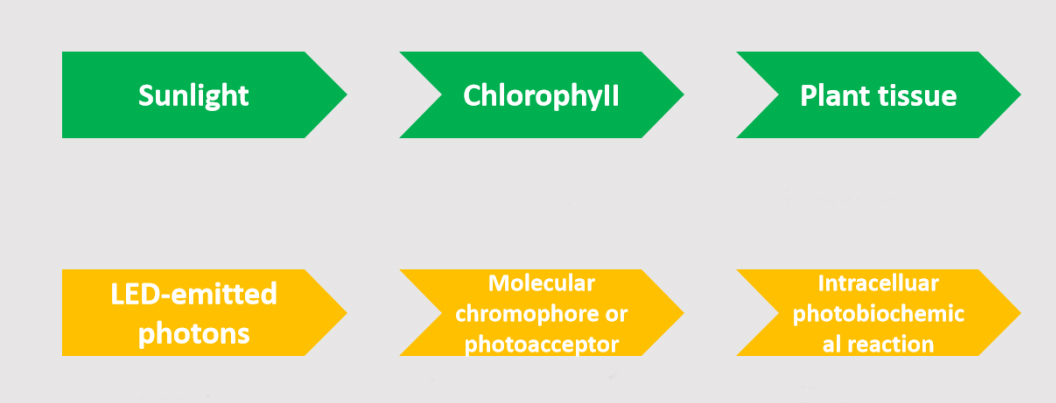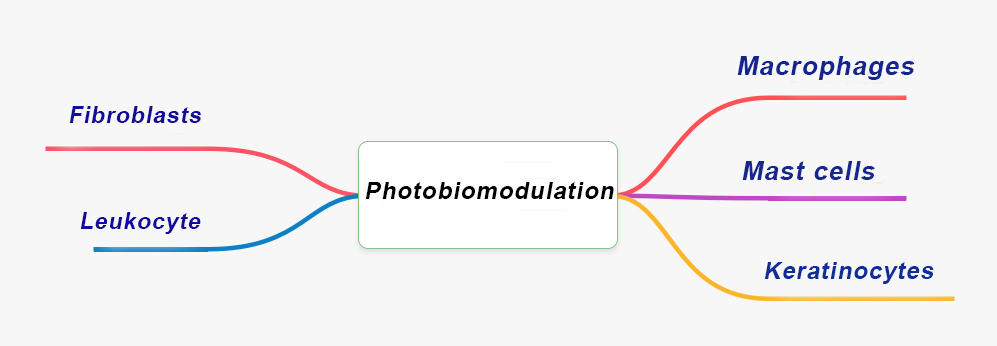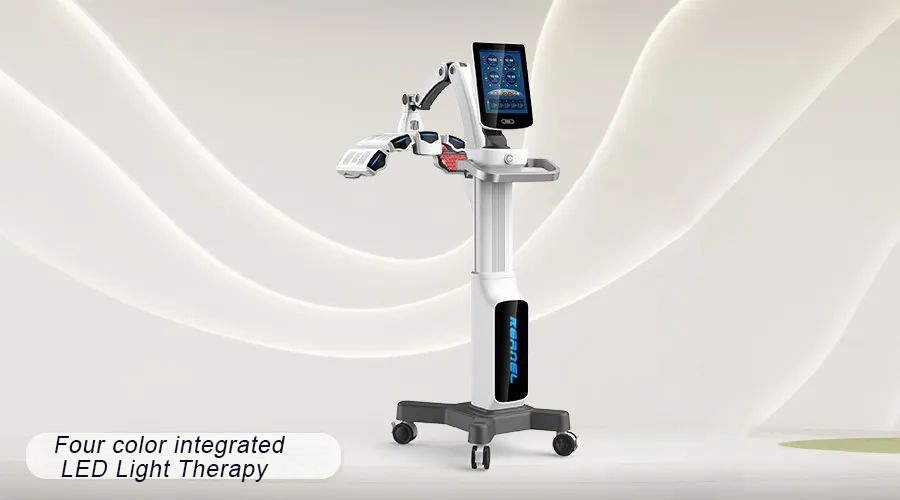The application of LED light therapy in treatment of facial dermatitis
A lecture shared by Dr. Hongbo Tang, ‘The application of LED light therapy in the treatment of facial dermatitis.’
Recently we invited Dr.Dr. Hongbo Tang, who is from West China Second Hospital of Sichuan University. and deeply researching the field of dermatology for many years, has extensive clinical experience in dermatopathology and dermatological imaging;possess
significant academic influence in the field of laser aesthetics.
Areas of expertise: treatment of acne, dermatitis, allergic skin diseases, alopecia, pruritus, rashes, eczema, etc.
01 What is LED light therapy?
LED light therapy, also known as photodynamic therapy, is a non-invasive treatment method that utilizes specific wavelengths of light to stimulate cellular activity and promote healing.

02 The mechanism of action of LED photobiomodulation

Photomodulation also increases local blood circulation
03 LED light therapy equipment for clinical use
Four light sources in one: red, blue, yellow, infrared
LED Phototherapy Technology: Low Energy Narrow Spectrum Light Source
Simulates LED light of a single wavelength
(red light/blue light/yellow light/infrared light)
Non-invasive, large area, natural therapy
04 Photobiological effects of red light
Red light: wavelength 760~622nm
Mechanism
The bioregulatory effect of red light is to produce photochemical and photobiological changes in cells. Red light stimulates the intracellular chromophore (cytochrome c oxidase, CCO), changes the activity of one or more endogenous enzymes and Electron transfer, thereby increasing mitochondrial respiration and ATP production, transmitting light signals from mitochondria to the nucleus, changing the metabolism and function of cells, thereby promoting the repair of skin tissue.
Biological effect
Promote cell proliferation, promote the release of growth factors, promote collagen deposition, scavenge oxygen free radicals, anti-inflammatory and analgesic.
Clinical application
Promote wound recovery, enhance the body's anti-inflammatory ability, relieve pain, and maintain hair.
05 Photobiological effects of blue light
Blue light: wavelength 450~435nm
Mechanism
Bacterial metabolism produces a large amount of endogenous porphyrin, which is activated into high-energy unstable porphyrin after absorbing blue light of a certain wavelength, and combines with triplet oxygen to form unstable singlet oxygen, which binds to compounds on the cell membrane damage the cell membrane and cause bacterial death.
Biological effect
Sterilizes and reduces inflammation, inhibits oil secretion.
Clinical application
Eliminate Propionibacterium acnes and eliminate inflammatory bacteria.
06 Photobiological effects of yellow light
Yellow light: wavelength 597~577nm
Mechanism
Yellow light can change the structure of the mitochondrial membrane of skin cells after continuous irradiation of the skin, stimulate the proliferation of fibroblasts,
thereby enhancing the immune function of the skin and the defense function of the skin tissue.
Biological effect
Anti-inflammatory, repair skin barrier, reduce scars, inhibit melanin production.
Clinical application
Whitening and rejuvenating the skin, repairing the skin barrier after exfoliation, and soothing sensitive skin.
07 Photobiological effects of near-infrared light
Near-infrared light: wavelength 780~1100nm
Mechanism
Near-infrared light can penetrate the skin to reach the subcutaneous tissue, and produce a radiative heating effect by causing intermolecular vibrations. At the same time,
it improves local blood circulation, increases tissue oxygen concentration, promotes the absorption and dissipation of inflammation and edema, relieves pain, and improves the body's immunity. strength and metabolism.
Biological effect
Improve blood circulation, promote the absorption of inflammatory exudate, relieve pain, and promote wound healing.
Clinical application
Eliminate edema, anti-inflammatory and analgesic, promote wound healing, improve blood circulation.
08 Clinical application range of LED light therapy
Regulate pigment metabolism
Rejuvenation and skin rejuvenation
Improve inflammation, erythema, edema
promote wound healing
promote hair growth
Prevent post-inflammatory hyperpigmentation
prevent sun spots
09 LED treatment plan for facial dermatitis
Hormone-dependent dermatitis: Repairing the skin barrier is key
①Discontinuation of glucocorticoids
② Non-hormonal immunomodulators can be used for anti-inflammatory allergies
③Yellow light combined with infrared light irradiation can repair the skin barrier and reduce pigmentation
④Safe and non-irritating medical skin care products for external use
Seborrheic dermatitis: adjust diet, avoid mental stress, regulate sleep
① Systemic treatment taking vitamin B complex and antihistamines
② Local treatment with calcineurin inhibitors and glucocorticoids
③ Red and blue light combined irradiation, inhibit inflammation, eliminate erythema, and promote skin lesion repair
④UVB (refractory seborrheic dermatitis)
Rosacea: Eat Healthy, Avoid Topical Irritations
① Oral type:
Tetracycline and macrolide antibiotics, metronidazole or tinidazole, isotretinoin, vitamin B complex, etc.
②For external use:
Antibiotics such as erythromycin ointment, sulfur-containing drugs, metronidazole gel, isotretinoin cream, etc.
③Non-drug category:
Yellow light combined with infrared light hydrating, anti-inflammatory, repairing skin barrier
Conventional phototherapy for other facial dermatitis
Clinically, facial dermatitis is a skin inflammatory disease with a high incidence rate. After the onset of the disease, patients generally have symptoms such as facial erythema,
scales, and papules, and most patients will experience discomfort such as local skin itching, burning, redness, and tingling.
The comparatively common facial dermatitis comprises multiple types such as contact dermatitis, seborrheic dermatitis, and facial recurrent dermatitis.
Through red light/yellow light combined irradiation, it can effectively reduce skin melanin production, promote cell growth, promote secretion of stimulating factors,
induce fibroblast proliferation, improve skin structure and function, and significantly improve skin elasticity.
10 Summary and Outlook
LED light therapy is one of the relatively new and safe facial dermatitis treatment methods. It has good effects in improving facial scales, itching, erythema, anti-inflammation, etc.,
especially photobiomodulation, which can improve facial skin The water content can induce the secretion of fibroblasts and promote the regeneration of collagen, which is worth promoting!

